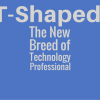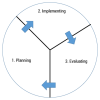Business Transformation Requires Transformational Leaders
Leadership and teaming skills are front and center in times of rapid change. Meet today’s constant disruption head on with expert guidance in leadership, business strategy, transformation, and innovation. Whether the disruption du jour is a digitally-driven upending of traditional business models, the pandemic-driven end to business as usual, or the change-driven challenge of staffing that meets your transformation plans—you’ll be prepared with cutting edge techniques and expert knowledge that enable strategic leadership.
Recently Published
Mrs. O’Leary’s Digital Cow
The Great Chicago Fire of 1871 served as a wake-up call not only to Chicago, but to other cities throughout the United States that they needed to do much more to manage their fire risks. This Advisor asserts that as we move into an era of truly hyperconnected, ubiquitous, cyberphysical systems, there could be huge consequences if these systems fail either accidentally or through deliberate actions, and that now, more than ever, there is a need for robust, reliable, and secure approaches across the lifecycle.
Agile can mean different things to different people depending on the context in which it is being discussed. This Advisor shows four different aspects in which we can understand and use Agile in practice: "learning," "doing," "embedding," and "being." Each of these four words can also represent four phases for adoption and transformation of an organization to Agile.
As a CIO, you need to not only understand and embody the many aspects of leadership needed by your organization, but to mentor, coach, and propagate these leadership behaviors all the way down the line to the individual performers within your team. As the examples in this Advisor demonstrate, leadership is required at all levels within the organization, but at different levels, different aspects of leadership become more prominent.
This article asserts that much like publishers, insurance companies will need to build digital solutions to serve a new generation of customers who demand it. Whether it's accomplished by building in-house teams to address the changing market, or by partnering with startups to cut through internal politics and move faster toward a digital solution, the shift towards a future where things are easier for customer, carrier, and broker is quickly becoming reality.
T-Shaped: The New Breed of IT Professional
In this Executive Update, we discuss why IT professionals must become more T-shaped, what it means to be more T-shaped, and how mid-career technology professionals need to continue to grow in their career in order to thrive in this rapidly changing world. We will also discuss how an executive understanding of this concept can be incorporated into business today to drive greater flexibility and value in the future.
A Maxim for the Times:
When a digital innovation that could destroy your current business model becomes economically viable, that business model will be destroyed.
Any business model in use exists because it fulfills a need. Destruction of that business model does not mean the need goes away; rather, it is fulfilled by different means.
Leaders who implement digital transformation through a top-down approach, consultant-led approach, or IT-led approach often ignore the conditions that prompted the need for digital transformation in the first place. They decide how to solve the problem without considering the organizational dynamics, behavioral habits, and culture that created the problem. In a rush to make a significant change, leaders decide to postpone dealing with human issues until after critical decisions are made and the transformation is underway. This approach spells failure. If your organization is rife with weak managers, a wholesale talent upgrade will be required. Digital transformation is a waste of time until you clean house. If you have good managers whose decisions have, nonetheless, created problems, then an understanding of the environment that led to those decisions is in order.
In this article, we explain how established firms can benefit from appointing a chief innovation officer (CInO) to lead a meaningful and sizable innovation department. We focus on the changing nature of innovation — what we have called “innovating innovating” — and discuss the nature of the innovation age, why innovation is critical, and the role of the “digital force” that drives much of 21st-century innovation. Next, we share the PIE model, with its three phases of planning, implementing, and evaluating, as a mental model for innovation management. We use the process of strategy making as an example of the changing nature of the 21st century’s digitally driven organizations. Finally, we show how CInOs can use the PIE model to effect transformation from the strategic, tactical, and personal perspectives.

















